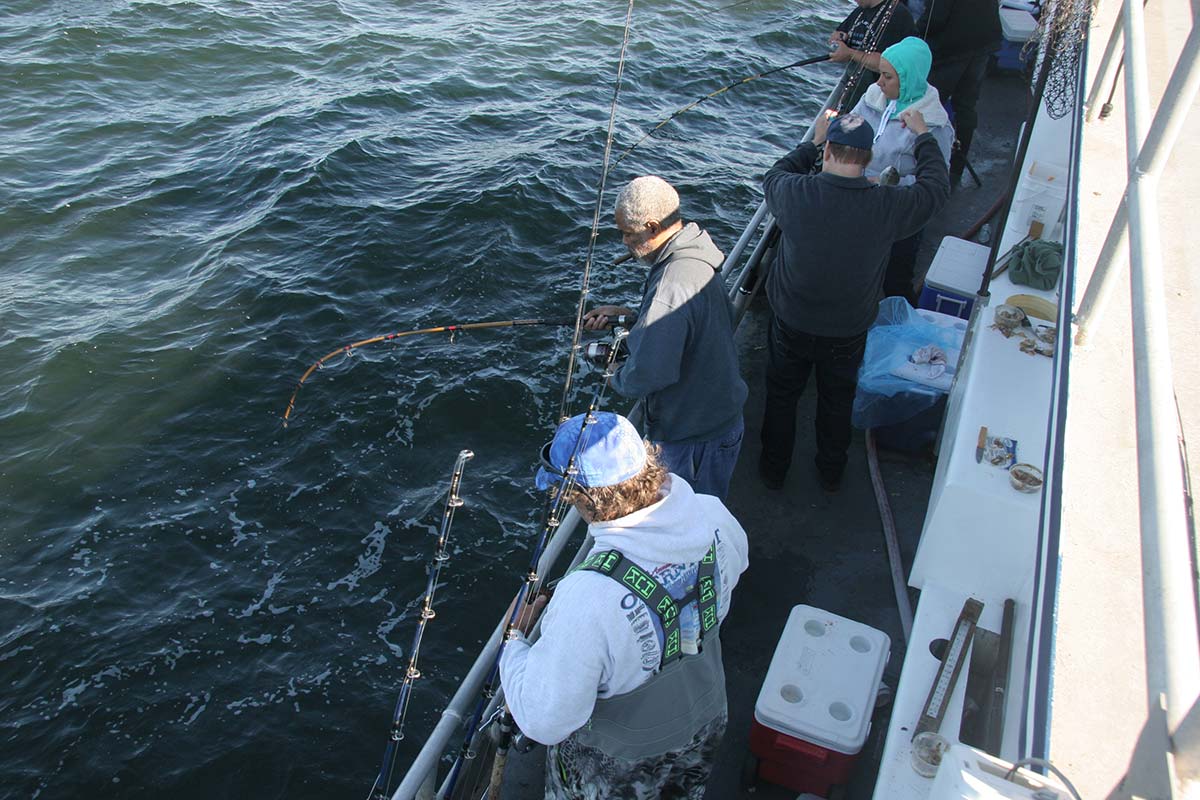
Head boat action continues in January off the New Jersey, Delaware coast.
You’ve hopefully all enjoyed the holidays to the max. A brand new year is upon us, but after Christmas, many saltwater anglers are satisfied with full bellies of egg nog and Christmas cookies and kind of put fishing in the rear view mirror and sit around until springtime striper fishing starts up again.
Sitting fireside in the cold may be a nice place to be, but what a mistake! January bristles with wreck fishing opportunity both nearshore and offshore, dishing up a varied menu of cod, pollock, mackerel, ling, sea bass and more.
OPB (Other People’s Boat)
Most boat owners have their rides winterized and out of the water, but that doesn’t mean you can’t bottomfish the reefs, wrecks, rockpiles and structures throughout January and the winter months. Party boat packets are always available, usually running 8 to 12-hour trips to access the shipwrecks and reef sites for bottomfishing opportunity. Specialized head boats such as the Norma K III and Gambler may strictly run after blackfish during the January season, while other boats like the Dauntless or the Jamaica II target a wide array of bottomfish including ling, cod, porgies, pollock and mackerel. A mild fare between $65 and $100 for a day trip will get you a ride to the grounds, rod and reel rental, bait, secret spots and most importantly, a ride back to the dock. You can’t beat that. Get a full listing of boats and sailing schedules in this edition of The Fisherman starting in the Report Section in the middle of the magazine.
Many bottom beasties are obliged to bite during January, as well as throughout February and March, seasons permitting. Here’s a few of the most wanted on the hit list.
Atlantic Cod
Found hovering on the seafloor up to 10 feet above the wreck. Larger cod tend to hang around old wooden wreckpiles with plenty of worm burrowing, as wells crabs and marine growth on them. Two dropper Hi-lo rigs made with 50-pound Seaguar fluorocarbon leader, fixed with size 6/0 Baitholder Gamakatsu or Mustad hooks with 6-inch red or pink curly grub tails on the shank of the hook. Bait with whole fresh clam, bergall strips, mackerel strips. Jig heavy 8- to 20-ounce hammered diamond jigs, bouncing them off the bottom.
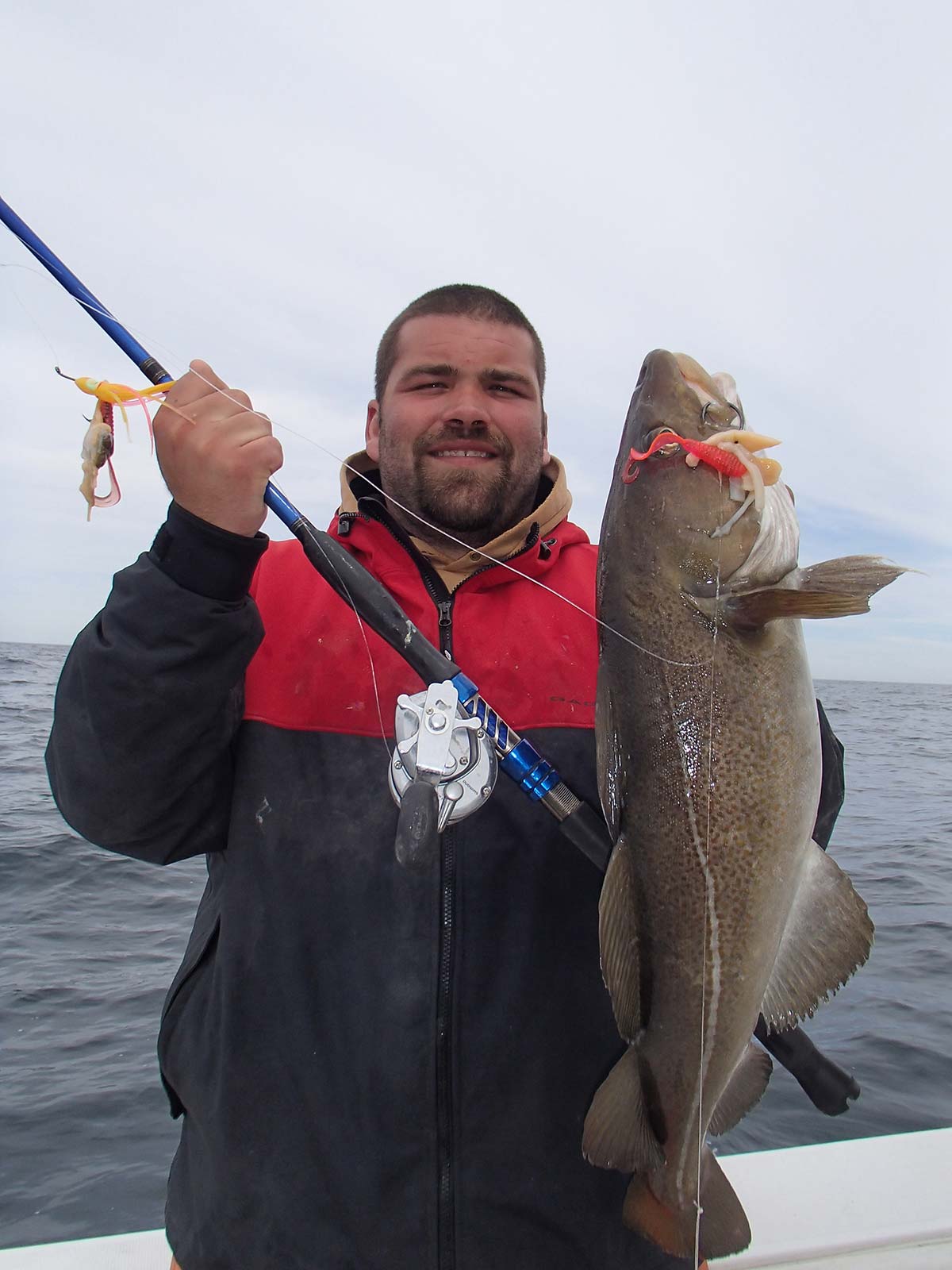
Pollock
Pollock school up in packs of three to eight fish or so and patrol above the wrecks usually 30 to 50 feet above. When you bottomfish over a wreck, look for bait schools of mackerel, herring or even porgies that hang above as pollock will pick off the bait, zooming through the schools mouths agape. Most anglers hook pollock when reeling their bottom rigs up quickly off the bottom as they hit a brick wall when the pollock zips over to attack. That said, the best way to target pollock is to drop a metal jig such as a 6- to 10-ounce Crippled Herring, Ava 87 or Savage Gear and reel it up quickly then re-drop and repeat. Or if you know what depth they are marking, drop it down to the depth and swoop jig it as the pollock will hit it on the drop.
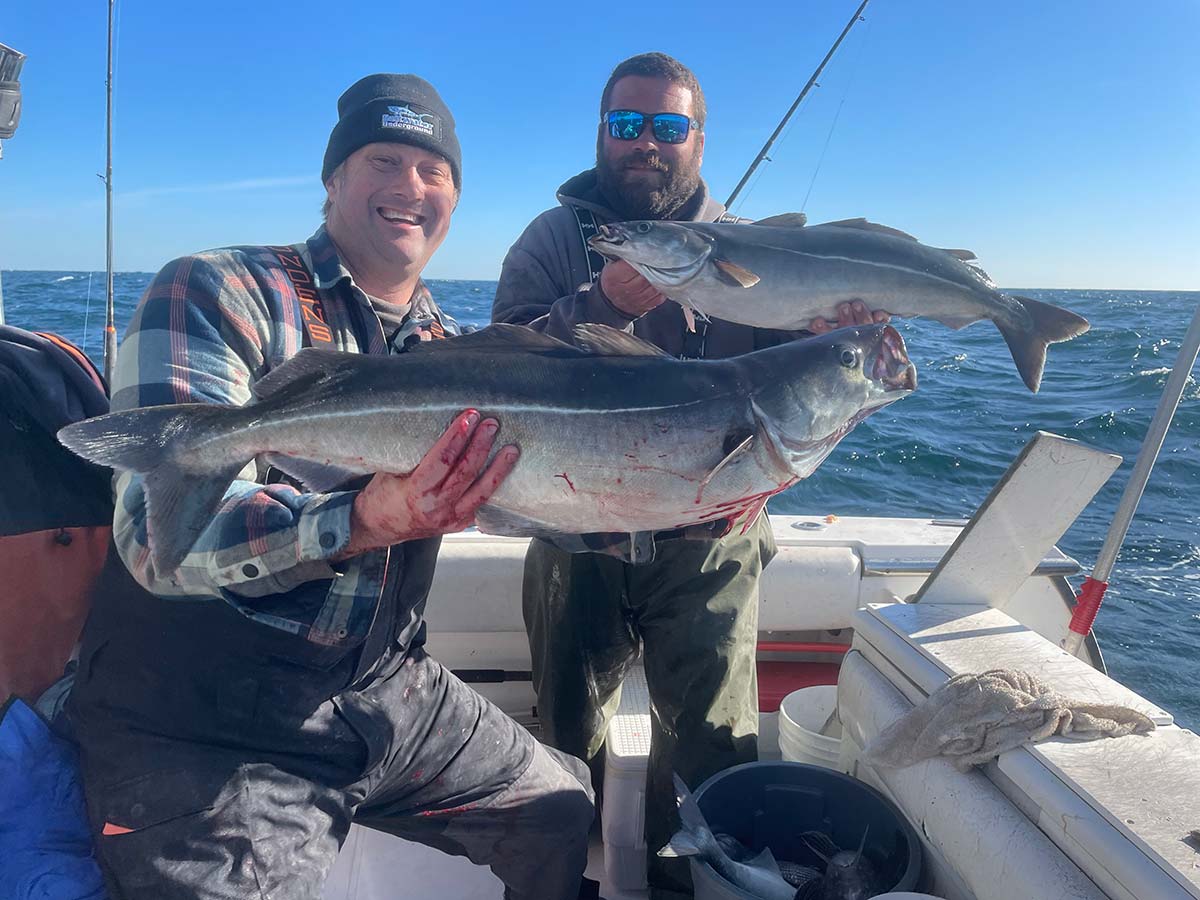
Ling (AKA Red Hake)
Ling live in the low rent district of the wrecks, often using their barbelled chins to skulk around the outsides and insides of wrecks to feed upon sea worms, clams, crabs and the like that settles to the bottom. Rigs should lay directly on the bottom. Fix up with a snelled size 3/0 Gamakatsu Octopus hook tied 2 inches above the bank sinker weight so the hook lays on the seafloor. Baits can be bits of clam, squid, bergall strips or 2- to 3-inch Berkley Gulp! Swimmin’ Mullet in chartreuse or white colorings; also take a few packages of Fishbites. Let the bait sit still on the bottom where you will feel the tap-tap-tap of the ling bite, then promptly set the hook.
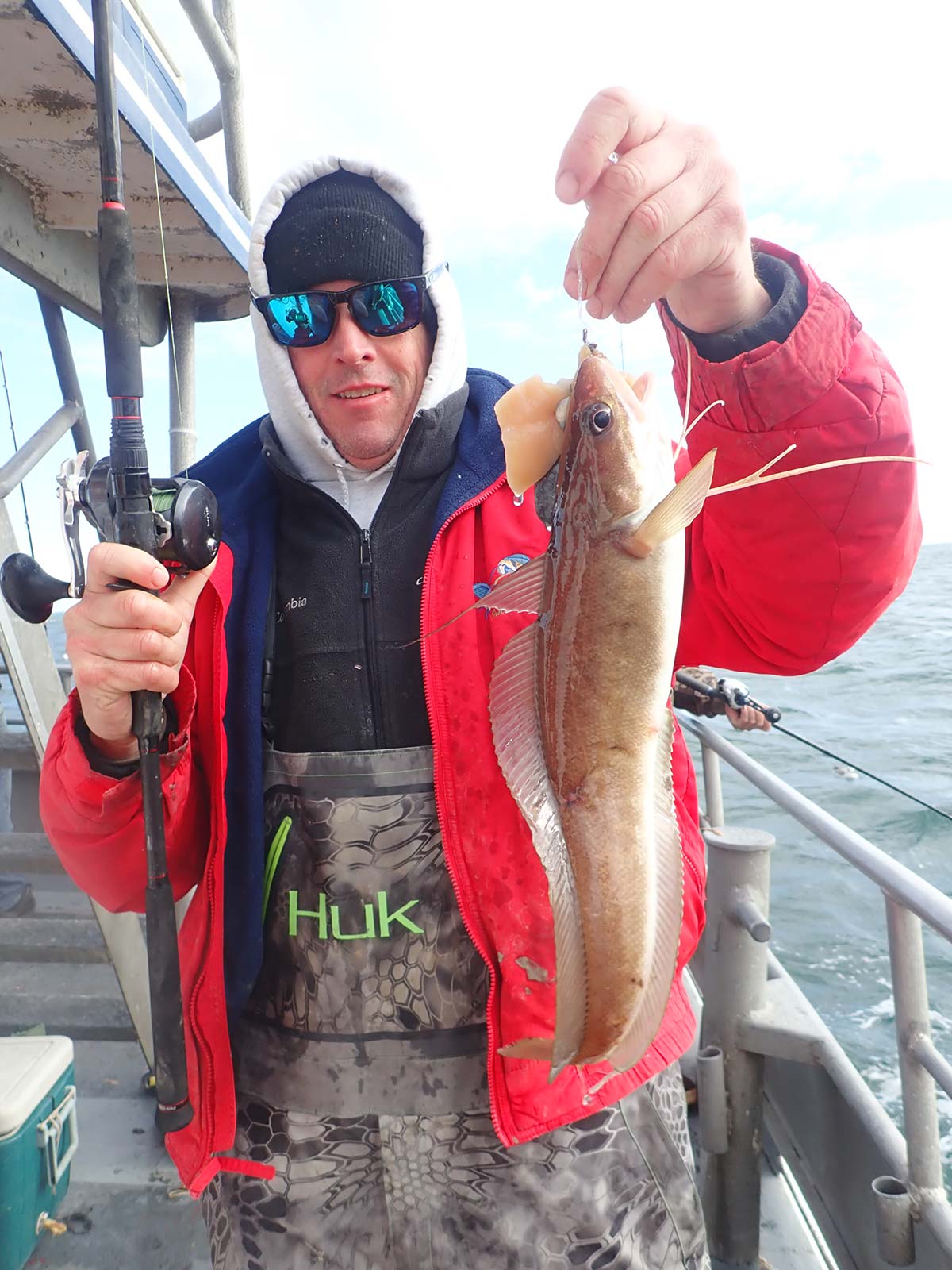
Blackfish, Or Tautog
Tautog definitely take top honors for most sought after target species in January as prime fishing conditions occur to bring out true trophy whitechins upwards of 15 to 18 pounds. Tog grounds are anywhere from 3 to 15 miles in January. A full array of green crabs, whitelegger crabs, clams and conch can be brought as baits to see what the blackies are keying in on. A general Belmar Rig one loop dropper with a size #4 Virginia style hook will get you in the game but more contemporary tactics include dropping down 1- to 2-ounce tog jigs from MagicTail, BottomSweeper or Toggy Time tipping the jig with half a crab and simply letting it sit on bottom, not “jigging” in the conventional sense, but maintaining contact with the seafloor and rolling it around.
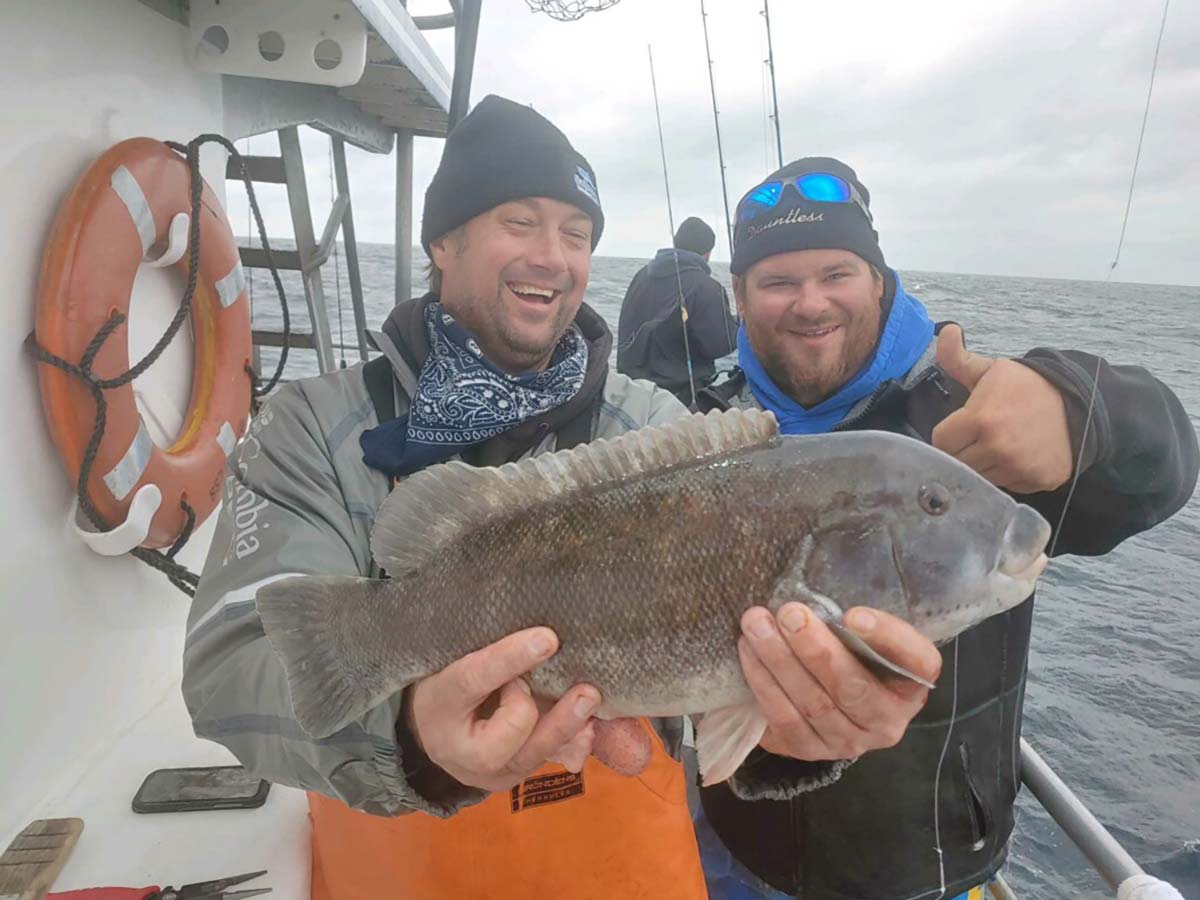
Prepare For Battle
Do not be underprepared when on the water because if it happens to be snowing out and 25 knots out of the northeast 20 miles offshore; it’s a long ride back to dock. Overpack with warm winter clothing such as gloves, sweatshirts, windbreakers, Grundens slicks, and knee-high insulated boots. Everything you wear should be insulated including your long John underwear and long sleeve thermal shirts. While it may not seem too cold onshore, once you get in the open water, the chill can cut right through you.
Bring a cloth rag to tie on the party boat rail so you can wipe off any seawater, clam guts or fish slime that attaches to you like glue in the cold temps and will super freeze your extremities. A few shake and break handwarmers put inside your boots, gloves, or on the back of your neck behind your hoodie will keep you warm throughout the day.
Bottom bouncing in the winter months require a rod with backbone to pull out ragged snags and muscle big fish up from the depths as well as a high-speed retrieve reel with shoulders to wrestle fish up efficiently and effectively out of the structure. Generally a 6-1/2- to 7-foot stout rod with a moderate flex on the tip, and a high speed retrieve 16 to 20 class reel with a 5.3:1 or 6:1 ratio are favored, since the depths can become cumbersome when reeling up to check your bait. I use a Lamiglas 7040CT rod and a Shimano Torium 16 reel.
Reels can be lined with 50- to 65-pound Power Pro green braid, and I usually add a 10-foot top shot of 40- to 50-pound TripleFish leader material, tied via Albright knot. The shock leader will resist scrapes from the ragged edges of wrecks better than braid which tends to cut immediately. Tie your lure or rig to the end of the leader. For the tackle box, in general, it should consist of size 2/0 to 6/0 Gamakatsu or Mustad Octopus or Baitholder hooks, 40 to 60-pound Seaguar fluorocarbon leader, 75-pound Spro Barrel Swivels.
Winter is no time to sit inside as adventure awaits offshore. Bundle up and bring the large cooler, you’re going to have plenty of fillets for the frying pan.


